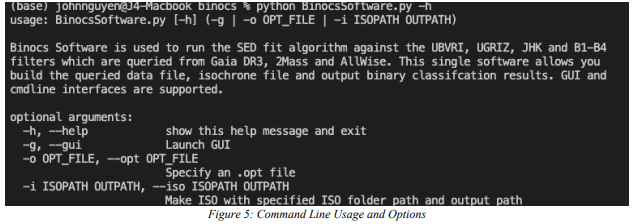Introduction
For my Honor’s Thesis, I derived an interdisciplinary project in computer science and astronomy. Under Dr. Peter Frinchaboy, I worked on enhancing the Binary INformation from Open Clusters using Spectral Energy Distribution (BINOCS) project, a method for detecting binary systems in stellar groups. The objective was to update the software to functionally work with Gaia data release 3’s spectroscopic data.
Software Enhancements
-Automated Data Collection across Gaia, 2MASS, and AllWISE
-Updated I/O File formats to support .csv and .fits
-Updated code to support Python3 instead of Python2
-Implmented Object Oriented Programing practices and updated library to use relative imports
-Added a Graphic User Interface, eliminating the need for config files
-Command Line options to streamline all tasks into one executable
Testing Accuracy
The enhanced software was tested on the same set of clusters against the old version to compare accuracy. It resulted in a 81% match for the same binary classification flag. The mismatch is likely because the data catalogs might have crossmatched the wrong AllWISE data to the source object, affecting the delta. 103 New classifications were made on stars that didn't have data before but was available in the new catalog but classifications were also lost/inconclusive if the online catalog was missing data.
Future Iterations
Currently, no new classifications for different clusters have been made. Unfortunately, I have not been able to finish the formatting of isochrones, thus no new clusters have been classified since they are dependent on a set of isochrones to be formatted. BINOCS also needs to be updated to support a newer set of isochrone catalog versions from PARSEC. The new software still utilizes the same old filter set; however, it is possible that GaiaXPy will have more filter sets accessible that can be integrated into the fitting algorithm. Future work will need to be done if a different set of filters would like to be used. A nice to have feature would be to extend this project to a public web app for accessibility. To aid astronomers around the world, I dream of this project being live on a website, with a backend supporting the API to query to databases, build data files, and run the fitting algorithm. This way, users don’t have to deal with installing the software and its packages. My hope is that this project is continued if I am no longer supporting its feature development so that astronomers around the world can classify binary star systems and obtain useful information for investigation of dark matter in nearby dwarf galaxies










